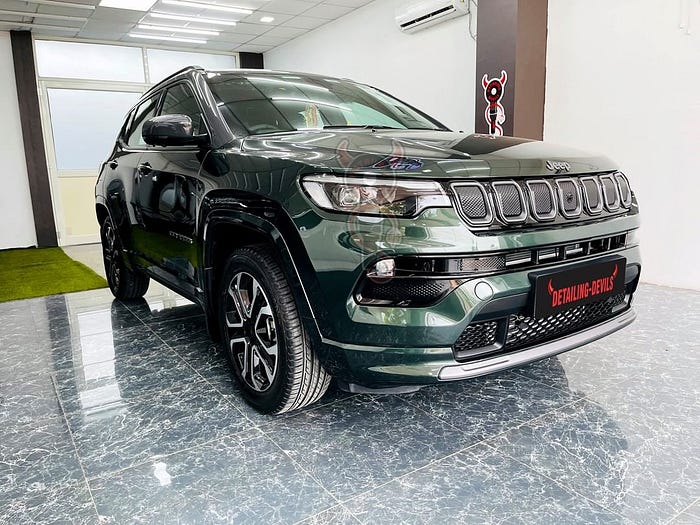In the fast-paced world of automotive advancements, maintaining the aesthetic appeal of our prized vehicles has become more critical than ever before. As car enthusiasts seek innovative solutions to protect their investments, one technology has risen to the forefront — ceramic coating. The revolutionary brilliance of ceramic coating has transformed the way we protect and preserve our vehicles, offering unparalleled benefits that go beyond traditional methods. In this comprehensive article, we will delve into the world of ceramic coatings, exploring their origins, highlighting their advantages, and understanding why they have become the ultimate choice for car protection.

The Evolution of Ceramic Coating
Origins and Development
Ceramic coatings, also known as nano-ceramic coatings or glass coatings, have their origins in the aerospace and industrial sectors. Developed initially to protect spacecraft from extreme atmospheric conditions, the technology evolved into the automotive industry as a premium paint protection solution. The early formulations of ceramic coatings were primarily used by high-end automotive manufacturers and luxury car dealerships to provide an unparalleled shine and protection to their exclusive clientele. However, advancements in technology and increased accessibility have now made ceramic coatings available to the wider automotive market.
The Science Behind Ceramic Coating
At the heart of ceramic coatings lies nanotechnology, where tiny particles form a protective bond with the vehicle’s paint surface. These nanoparticles create a hydrophobic, semi-permanent layer that repels water, contaminants, and UV rays. The chemical composition of ceramic coatings ensures that they are highly resistant to environmental pollutants, bird droppings, tree sap, and harsh chemicals, preserving the vehicle’s paint from oxidation and fading.
The Advantages of Ceramic Coating
Unmatched Protection
The primary advantage of ceramic coating is its ability to provide unmatched protection to a vehicle’s paintwork. The hydrophobic nature of the coating repels water, preventing the formation of water spots and the accumulation of dirt and grime. Additionally, the strong chemical bond formed by ceramic coatings ensures long-term protection against harsh environmental elements, road salt, and industrial fallout, reducing the risk of paint damage and corrosion.
Enhanced Aesthetic Appeal
Ceramic coatings are renowned for their ability to enhance a vehicle’s aesthetic appeal dramatically. The nano-level smoothness of the coating results in a deep, mirror-like shine that surpasses conventional waxing or polishing methods. The high-gloss finish not only looks visually stunning but also adds to the resale value of the vehicle, attracting potential buyers with its showroom-like appearance.
Cost-Effectiveness in the Long Run
While ceramic coatings may require a higher initial investment compared to traditional waxing, their long-term cost-effectiveness cannot be underestimated. The semi-permanent nature of ceramic coatings means that they can last for years with proper maintenance. Unlike wax or sealants, which require frequent reapplication, a well-maintained ceramic coating can provide continuous protection for up to five years or more, significantly reducing the need for repeated expenses.
Time-Saving Benefits
Traditional methods of waxing and polishing demand regular application and meticulous maintenance. In contrast, ceramic coatings drastically reduce the time and effort required for vehicle upkeep. The hydrophobic properties ensure that dirt and contaminants do not adhere as strongly to the surface, making cleaning a breeze. Moreover, the elimination of waxing sessions saves valuable time for car owners, allowing them to focus on other aspects of their busy lives.

Application and Maintenance
Professional Application Process
While there are DIY ceramic coating kits available, it is highly recommended to opt for professional application services. Trained technicians have the expertise and equipment to ensure a flawless and even application of the ceramic coating, maximizing its protective capabilities.
Preparing the Surface
Before the application of the ceramic coating, the vehicle’s surface needs to be thoroughly cleaned and decontaminated to achieve optimal bonding. This step involves paint correction to remove swirl marks, scratches, and other imperfections, allowing the coating to adhere better and create a seamless finish.
Post-Application Care
After the ceramic coating is applied, the vehicle requires minimal maintenance. Avoiding harsh chemicals, using pH-neutral car wash solutions, and regular rinsing can ensure the longevity of the coating’s hydrophobic properties. Periodic inspections and touch-ups by professionals can also help maintain the coating’s effectiveness.
Debunking Misconceptions
Despite the numerous benefits, there are some misconceptions surrounding ceramic coatings that need clarification. One such belief is that ceramic coatings make the vehicle scratch-proof, which is not entirely accurate. While ceramic coatings offer excellent scratch resistance, they cannot prevent all types of scratches, especially those caused by sharp or heavy objects.
Conclusion
Ceramic coating has emerged as a game-changer in the automotive industry, revolutionizing the way we protect and preserve our vehicles. With unmatched protection, enhanced aesthetic appeal, cost-effectiveness, and time-saving benefits, it has quickly become the ultimate choice for car enthusiasts and professionals alike. As technology continues to advance, we can expect even more breakthroughs in the world of ceramic coatings, further elevating the brilliance of this remarkable automotive innovation. For car owners seeking a reliable and long-lasting solution for their vehicle’s protection, ceramic coating undoubtedly remains the gold standard in car care.
See Also:
- The Ultimate Guide to Dragon PPF
- Protect Your Car’s Paint with Dragon PPF — Detailing Devils
- Things You Must Know While Buying Ceramic Coatings
- Top 13 Car Detailing Franchise in India
- Teflon vs Ceramic Coatings: Which one is better?
- The Pros and Cons of Ceramic Coating a Car
- Car Coating & Nano Ceramic Coating Services
- Best Bike and Car Detailing Service in Delhi NCR, India
- Ceramic Coating Maintenance Tips
- Ceramic Coating Service: Revolutionizing Vehicle Care
- Can you apply Ceramic coating over paint protection film?
- The Beginner’s Guide To Professional Car Detailing: What You Should Know
No comments:
Post a Comment